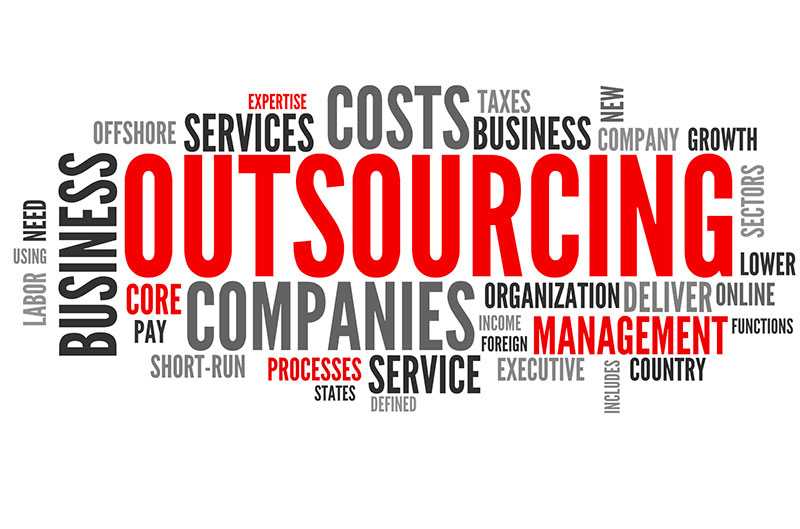
Outsourcing sales entails contracting with a third-party company to engage a dedicated Outsourced Sdr Firm. While many business owners believe that keeping everything ‘in-house’ saves money, there is a risk that your sales force will become complacent and stop researching the competition or market changes extensively enough.
Hiring a team from outside your company to focus on your product’s promotion, marketing, and selling allows them to focus exclusively on the task at hand, rather than worrying about office politics or the extra responsibilities that come with being a full-fledged employee.
It is debatable if outsourcing offers a satisfactory return on investment. Suppose the essence of the business you employ is solely sales. In that case, it comes to reason that it is in their best interests to increase your sales figures as much as possible to assure repeat business or referrals to colleagues and peers.
Of course, you must be completely confident in the field marketing agency you choose to represent you, as the choice could make or break your brand. The agency you employ must promise to maintain client confidentiality, work ethically, and adhere to any contractual terms you specify.
These agreements frequently include goals that must be met before the hired team is paid. This is frequently used to motivate the team to meet their Outsourced Sdr. They will be given a smaller, less valuable reward if they do not meet their target. As a result, field marketing companies must meet targets and, above all, deliver to remain viable in a competitive market.
You may concentrate on other issues once you’ve hired a field marketing firm to handle your sales. Those in charge of managing the sales team are freed up to focus on more critical concerns, with only a weekly meeting with the team’s leader required to ensure that targets are reached. Sales are coming in. If the outsourced product is the company’s principal source of revenue, time can be spent on new product development, identifying new horizons for the company to pursue, or implementing new corporate structures if the organization is becoming too top-heavy. Outnumbering the Indians was never a good idea for the chiefs. Hourly lists and dials The ideal list resources for your program will be taught to good providers.
They may usually supply you with a nest list or assist you in obtaining one. The mistake of thinking that the higher the number of dials each hour, the better. That is a complete misunderstanding! Let’s say you’re selling a complex software solution and need a company to properly qualify your prospects.
If a supplier claims to be able to dial 30 calls per hour on average, that’s 2 minutes per call! How do you have a quality conversation with a prospect in less than two minutes? Unfortunately, it isn’t the case. Predictive dialers are typically used by “marketing agencies.” Essentially, they are simply burning up your valuable contact lists while neglecting Quality.
The Quality of the lead or sale is the focus of a professional organization. As a result, they should be able to provide you with an accurate estimate of the average dials per hour for your particular program.
Provider with a Physical Location or One Who Works Remotely
Cost – Brick and mortar businesses have a significantly higher overhead than online businesses. As a result, they must cut costs internally to remain competitive. This frequently entails paying their callers a lower wage. The level of talent is affected. Remote model providers are typically more cost-effective than brick-and-mortar businesses.
- Labor pool: Brick and mortar businesses are restricted to a 30-mile radius around their site. Once that fund is depleted, the company’s expansion options are constrained.
- Recruiting Talent: A company’s ability to acquire top-tier talent is critical to its success. Most experienced workers between the ages of 30 and 60 have no desire to commute to a contact center and spend their days in a cubicle.
- Flexibility – The ability to market in certain geographic regions of the country with varying accents and dialects. Providers with a distributed remote workforce have a lot more flexibility when it comes to staffing. They can strategically deploy calling agents to various geographic regions around the country.
- Scalability: Fixed brick and mortar suppliers have a finite amount of space to expand. The flexibility to scale up or down on a dime is unique to remote model suppliers. They are not concerned about balancing desks and real estate.
Close quarter cubicles are used in brick-and-mortar call centers. As a result, employees converse with one another and are easily distracted between calls, causing them to lose concentration on the task. On the other hand, remote callers operate alone in a quiet professional home office and are laser-focused on getting things done.
The noise level in call centers is high. This is extremely distracting to the prospect on the other end of the line. It also seems unprofessional, especially in the B2B sector. Without the distraction of background noise, remote agents converse with prospects.
Employee Turnover
Employee turnover at brick-and-mortar call centers is extremely high. Because a long journey in traffic does not stress them, remote agents are more productive. As a result, they are less likely to burn out. This translates to more energy and better results for our clients.
While companies have always used marketing personnel, outsourcing the full sales process is a relatively new way of tackling this company element. You may be able to reduce your company’s expenses while increasing earnings by outsourcing.
The advantages might be substantial if you’ve never used a field marketing firm to boost Best Outsourced Sdr Companies. Contact a marketing agency to learn more about how your company could profit.






